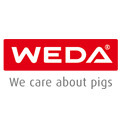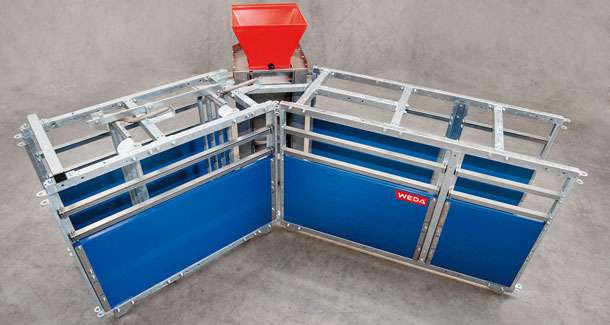 Sometimes, less is more: especially for sow managements, WEDA Dammann & Westerkamp have now developed a cost-effective training station for demand feeding stations. The low-budget variation of the SowComp model dispenses with any kind of electronics, works with open doors and with a simple feeding system.
Sometimes, less is more: especially for sow managements, WEDA Dammann & Westerkamp have now developed a cost-effective training station for demand feeding stations. The low-budget variation of the SowComp model dispenses with any kind of electronics, works with open doors and with a simple feeding system.
This way, the sows in WEDA’s training station learn to reach the trough by passing through a narrow passage. In doing so, the animals get used to taking up their feed in a demand feeding station in a fast, uncomplicated and stress-free way.

In order to simulate real operating conditions of the later demand feeding station, the unit is equipped with a double-flap iron-barred exit gate. The advantage: this prevents the entering of the animals into the “wrong direction”.
As a rule, the training station is installed far away from the herd of sows, in the quarantine division. It is recommended to split up the gilts to be trained into groups of 15 to 20 animals. After a training period of approximately two weeks, the sows are conditioned and know exactly how a demand feeding station functions.
After this, they can be transferred into the proper waiting area. As the animals are now used to walking along a passage for taking up their feed, their shying away from automatic demand feeding stations is practically non-existent now.
The Advantages at a Glance:
- The training station does not require any expensive technology
- playful learning of the demand feeding situation
- saves training time and money
- no entrance gate required
- cross-system applicability.

February 15, 2013 - WEDA


